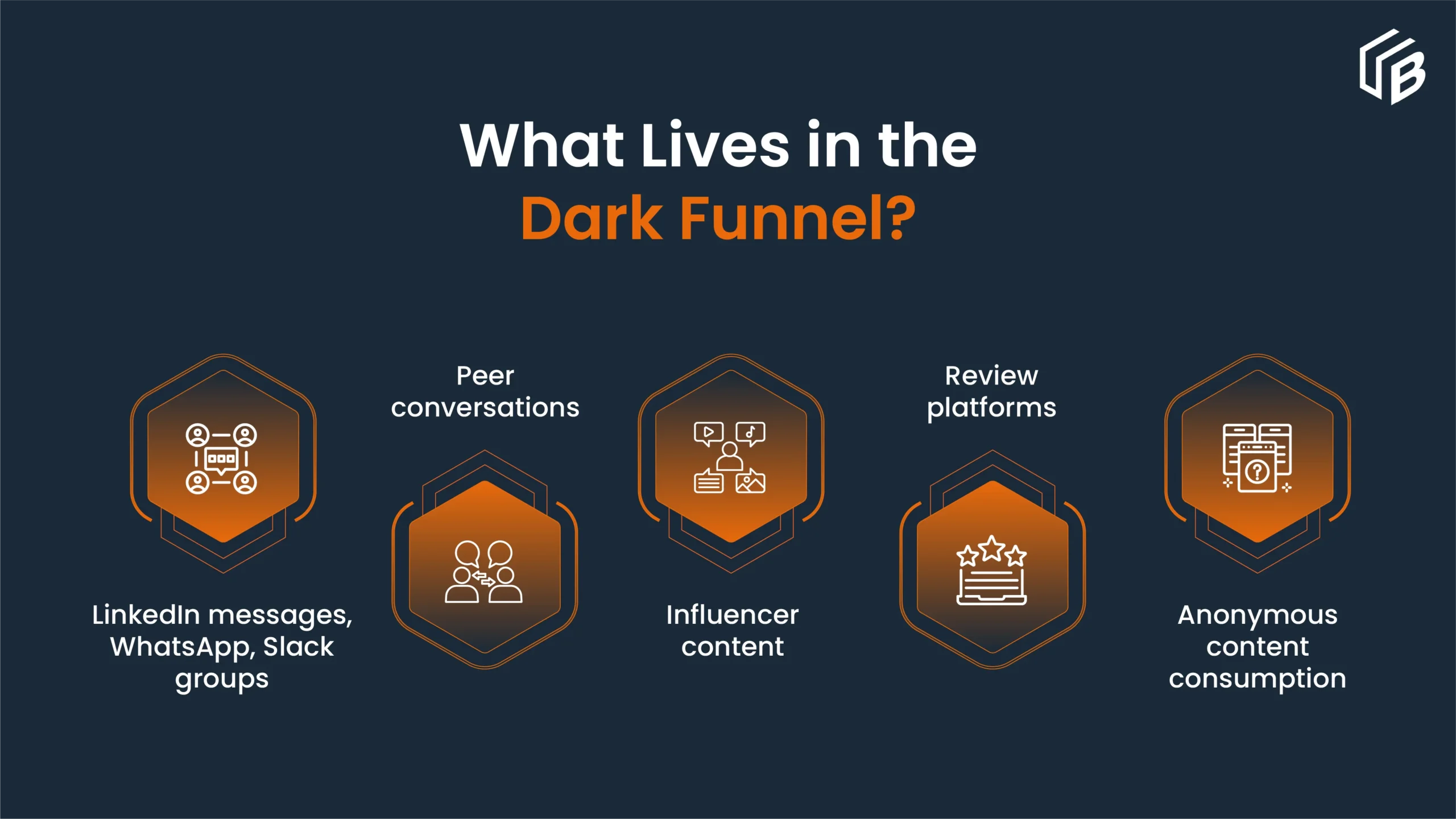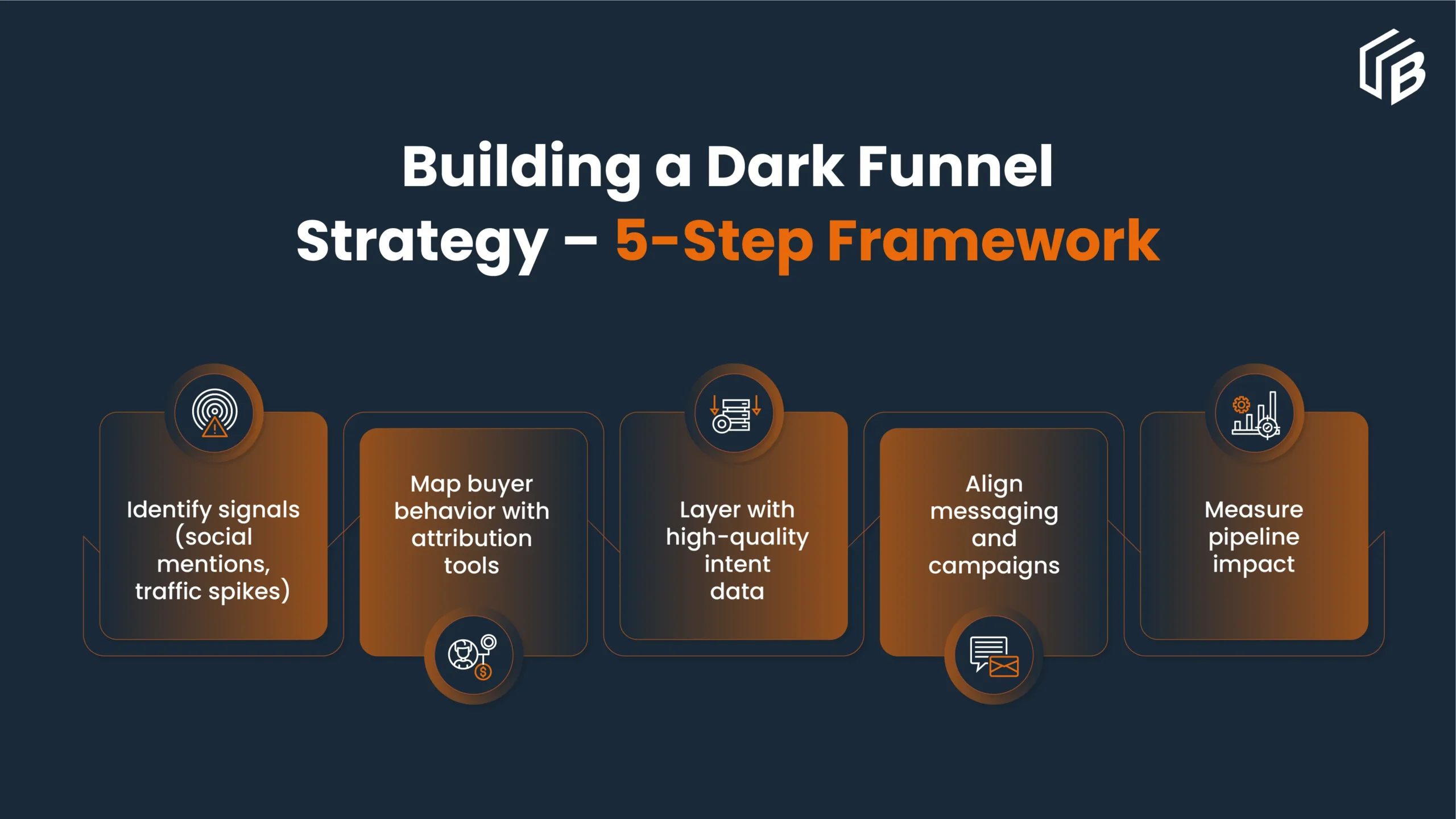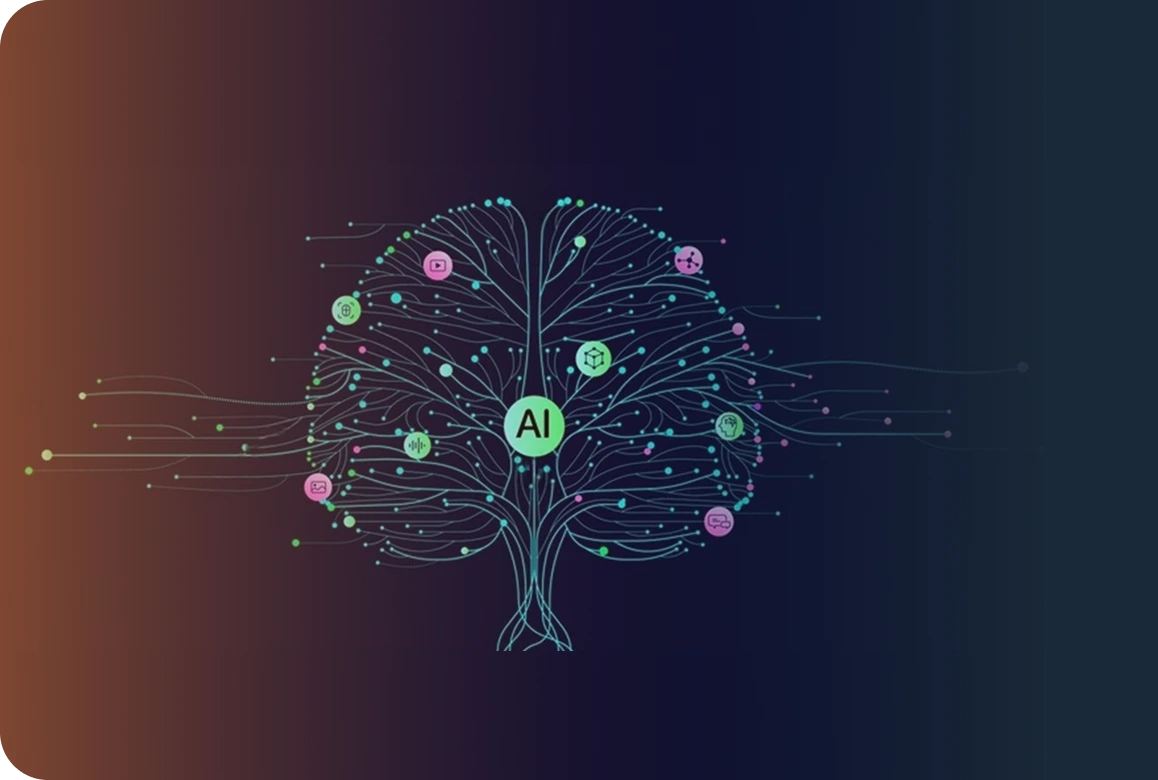
In a B2B world where buyers call the shots, dark funnel marketing has shifted from a nice-to-have to a non-negotiable. Traditional funnels, built on trackable clicks and form fills, fail to capture the full picture of how buying decisions are made. Today’s buyers are self-educating across untraceable channels like private communities, peer conversations, and dark social platforms.
These invisible touchpoints make up the B2B dark funnel, the part of the journey that happens well before a lead appears in your CRM. Ignoring this activity means losing sight of critical intent signals that influence pipeline and revenue. As buyer journeys grow longer and more complex, B2B marketers must adapt.
Understanding and illuminating the dark funnel gives you a strategic edge that allows you to align with how modern buyers actually research, evaluate, and decide. In this new era, visibility into the unseen is what separates high-performing marketing teams from the rest.
What Is the B2B Dark Funnel?
The B2B dark funnel refers to all the research, conversations, and content consumption that buyers engage in outside of traditional, trackable channels. Think private Slack chats, word-of-mouth referrals, influencer posts, third-party review sites, and other off-the-grid activities. These are critical steps in the decision-making process, yet they remain hidden from conventional analytics tools.

Dark Funnel vs. Traditional Funnel
In a traditional funnel, marketers track behaviors like email clicks, form fills, and website visits. These actions are easily attributed and measurable. In contrast, the dark funnel in marketing encompasses touchpoints that leave no digital footprint—or at least none that is easily visible. That means a large percentage of buyer activity goes unnoticed, making it harder to connect the dots between awareness and conversion.
Why the Dark Funnel Can’t Be Ignored
Overlooking the B2B dark funnel means overlooking real revenue-driving engagement. Buyers are making decisions long before they enter your CRM or click on an ad. Without visibility into the dark funnel, marketing teams risk misaligning content, underestimating buyer interest, and misallocating budget.
How B2B Buyer Behavior Has Evolved in 2025
B2B buyer behavior in 2025 has taken a decisive turn toward privacy, autonomy, and peer-driven influence. Today’s buyers prefer to self-educate, relying heavily on private channels from Slack communities to closed social groups, where they can exchange insights away from the noise of traditional marketing. This rise of dark social in marketing has become a defining trend, making it harder for vendors to track how and when influence happens.
As a result, even the most sophisticated B2B attribution strategies are falling short. These hidden conversations and content shares leave few measurable signals, creating blind spots in how marketers understand and influence the path to purchase. Without adapting to this shift, businesses risk misattributing success, overlooking key decision drivers, and missing out on early buying signals that never show up in a CRM or analytics dashboard.
How to Recognize Your Dark Funnel
You have to track the dark funnel if you want a realistic view of your buyer journey. That means going beyond standard analytics.
1. Tools and Techniques
Modern dark funnel attribution tools help illuminate previously hidden touchpoints. Platforms like 6sense, HockeyStack, and DreamData aggregate anonymous buying signals, correlate them with intent data, and help marketers map engagement patterns that lead to pipeline.
Other tactics include analyzing branded search terms, direct traffic spikes, social mentions, and high-consumption content journeys, even when those journeys happen anonymously.
2. B2B Dark Funnel Engagement Tactics
To uncover dark funnel engagement tactics, focus on how buyers behave before they become leads:
- Monitor spikes in direct traffic or branded keyword searches
- Look for increased engagement on ungated content
- Track social engagement signals like shares, comments, and reposts
- Identify trends in third-party review traffic or mentions on forums
3. Building a Dark Funnel Strategy
An effective dark funnel strategy starts with gathering signals, then layering them with intent and behavioral data to build a more complete buyer picture. From there, use predictive analytics to identify likely in-market accounts and tailor messaging accordingly.

Why It Matters for Your B2B Marketing Strategy
A strong, dark funnel marketing strategy helps improve every part of your marketing and sales approach. It gives you the missing context behind buyer behavior and helps you act on it.
1. Better Lead Scoring and Attribution
Dark funnel attribution tools reveal signals that form fills miss. You can score leads based on actual intent, not just surface-level actions. This improves sales alignment and builds stronger pipeline quality.
2. Smarter Campaign Planning
Understanding B2B dark funnel activity helps you create content that matches how buyers really think and research. Your messaging becomes more relevant. Campaigns perform better. Engagement and conversions increase significantly.
3. Stronger Attribution Models
Dark funnel signals fill in the gaps that traditional models leave behind. You can see what drives decisions, not just what’s easy to track. This gives you a more comprehensive view of ROI and helps you focus your budget where it works.
Final Takeaway: The Dark Funnel Is Not a Black Box
While it might feel hidden, the dark funnel is not impenetrable. With the right dark funnel marketing strategies, tools, and mindset, B2B marketers can shine a light on what was once invisible.
Understanding your dark funnel in marketing is key to aligning with how buyers really buy. It’s an opportunity to meet prospects earlier in their journey, guide them more effectively, and convert them more confidently.
Your next step? Start developing a framework to recognize hidden signals, explore dark funnel engagement tactics, and embrace a strategy that reflects the reality of today’s B2B buyer.
Our blog
Latest blog posts
Tool and strategies modern teams need to help their companies grow.

Learn how AI-Enhanced Tele-Verification and Account-Based Experience (ABX) together h...

Learn how to improve lead quality and boost conversion rates in B2B with AI enrichmen...

Unlock the Top 5 templates to boost your go-to-market strategy in 2025–2026 with AI...





